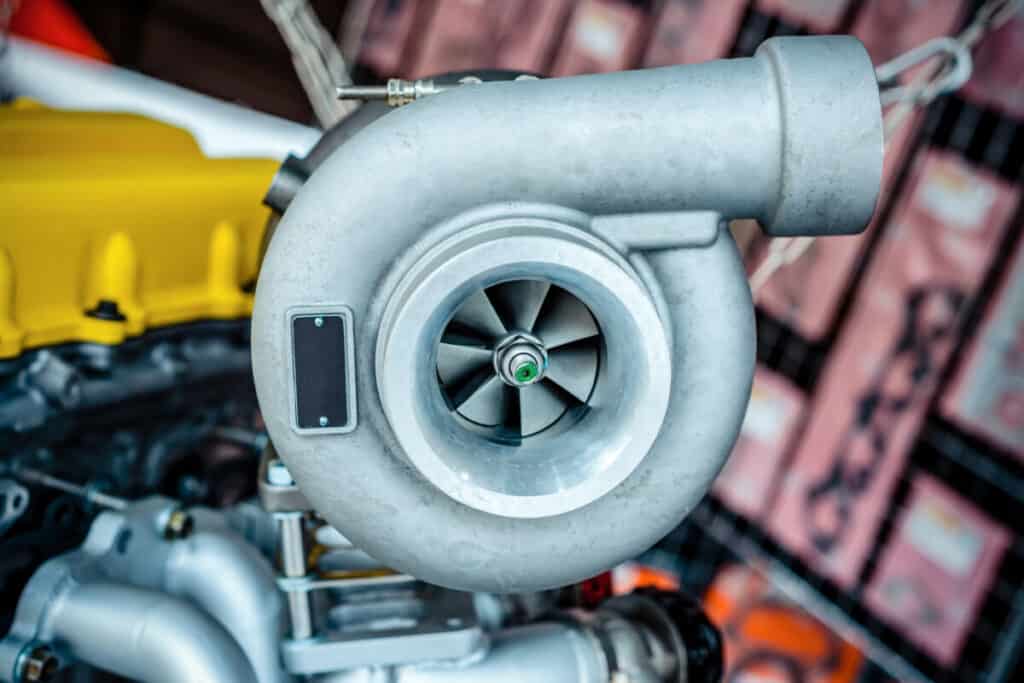After being involved in the automotive world for a very long time you constantly hear the same arguments being had time and time again and the most prevalent being “are turbos better than naturally aspirated engines”? Well, this article is intended to clear this up once and for all.
A turbo is better than NA if you need more power and fuel efficiency. Turbos are designed to produce more power from a small engine without the need to modify engine displacement. This means you can achieve the same power output from a 3.0 L V6 NA engine as you could with a 2.0 L inline-4 turbocharged engine, while saving up to of 30% on fuel cost.

Which is Better Turbo or NA
When it comes to which is better, turbo or NA, both set-ups have pros and cons. If it is straight-up power you’re looking for, there is no replacement for a turbocharger due to the massive amounts of air they force into the engine, hence the name “Forced Induction”. To get a better understanding of how a turbo works I think you should check out this article first which covers the topic in full.
Power
The way turbos create power is due to their design. Turbos are designed to allow small displacement engines to produce massive amounts of horsepower by forcing compressed air into the cylinders. This compressed air then creates a much bigger explosion inside the cylinders, creating more power.
The most basic principle of tuning an engine is more air + more fuel = more power. That’s what makes a turbocharger perfect for creating more power, because it draws in a much larger volume of air into your engine combustion chamber, giving way to an average of 35% performance increase in your engine.
Another huge advantage of a turbocharger vs naturally aspirated is that you can easily adjust the boost pressure of your turbo by simply installing a boost controller or by replacing the spring in your wastegate with a spring with a slightly stiffer spring rate.
By adjusting your boost pressure you can very easily achieve more than 15% more power output than the stock boost pressure. Horsepower gains like this are impossible with a NA engine unless you are willing to spend serious cash oversizing pistons, getting the head ported & polished, along with bigger injectors, etc.
The only downside in regard to power output when running a turbo over an NA engine is turbo lag. Turbo lag is the amount of time it takes for a turbo to build sufficient pressure inside the housing to effectively increase the engines performance. The bigger the turbo the more turbo lag it will suffer from due to needing a larger volume of air to fill the turbo housing.
The good news is that turbo lag can be eliminated by using anti lag. Anti lag is a function that can be installed by remapping the vehicles ECU. Anti lag is only necessary or recommended when using an oversized turbo on a high performance engine due to anti lag causing far more work and stress on the internals of both your engine and turbo, which will eventually lead to failure.
Fuel Efficiency
But aside from the massive increase in power you gain, you will also notice a huge difference in fuel economy when you compare turbo vs naturally aspirated engines. The reason turbos are more fuel efficient because of two things:
- With a turbocharged engine, you will not need to rev your engine as high as you would with an NA engine to achieve the same power output. This is due to an NA engine needing atmospheric air pressure to feed the engine with cold air which only comes with speed and high RPMs, whereas a turbo engine will suck air into the compressor of the turbo at lower RPM because the compressor is being driven by the exhaust gasses produced by the engine. To find out more about what makes a turbo “kick in” you should check out this article.
- The second reason a turbo is more fuel efficient is that instead of allowing the engine’s exhaust gasses to dissipate into the air, a turbocharger actually recycles these exhaust gasses and uses them to drive the compressor wheel inside the turbo. This in itself makes a turbocharger engine more fuel efficient because it is not wasting energy by allowing it to dissipate into the ether as a naturally aspirated engine would.
Reliability
Now that we have established that turbos are better than naturally aspirated (NA) engines when it comes to power and fuel efficiency, unfortunately, the same can’t be said with regard to reliability.
The difference between a turbo or naturally aspirated engine is that the NA engine does not require the addition of any special equipment such as a turbo or supercharger.
Instead, an NA engine achieves its power purely from the amount of fuel you can supply the engine with and the size or displacement of the engine, which is measured in the cubic capacity of the cylinders (CCs).
So what does this mean for reliability? Well in short, it means that because a turbocharged engine has a lot more moving parts, it is far more susceptible to failure.
The main reasons a turbo usually fails is due to poor maintenance, a lack of understanding as to how a turbo works and using the incorrect start up and shut down procedure which should be followed when driving a turbocharged vehicle.
(To find out more about the CORRECT way to warm up and cool down a turbo engine you need to check out this quick article, it will save you thousands in repairs if followed correctly).
Comparing this to a straight forward naturally aspirated engine, the NA engine is far more reliable than a turbo engine purely because it has far less moving parts and things to wear and break. But having said that a turbo engine is still very reliable so long as all the correct steps are taken to prolong the life of the turbo.
If you are still not sure about how reliable turbos really are, you should check out this article which covers in detail exactly how reliable a turbo really is and what not to do if you want your turbo to last as long as your engine.
Turbocharger Pros and Cons
Now lets take a look at both setups and do a direct comparison to be sure you are making the correct decision before you decide is a turbo better than a naturally aspirated engine.
Pros
- 35% more power when compared to a NA engine of the same displacement.
- More fuel efficient
- Cleaner on the environment
- Power/boost is easily regulated by implementing a boost controller
Cons
- Slightly more susceptible to failure and breakdowns
- Initial set-up cost can be expensive
- Turbo lag
- More maintenance required
Naturally Aspirated Pros and Cons
Pros
- Less maintenance needed
- More reliable due to less moving parts
- Capable of revving higher than a turbocharged engine
Cons
- More displacement needed to achieve the same power output of a turbocharged engine
- Less fuel efficient due to harder acceleration needed to achieve the same speed
- More harmful to the environment
- Power output is not easily regulated with a naturally aspirated engine as is with a turbocharged engine
Conclusion
With everything taken into consideration, I think it is fair to say both setups are needed for specific applications. But when it comes to power and fuel economy, the turbocharged engine would be the preferred choice by a long shot.
But if your swaying more so on the reliability side of the fence, my suggestion would be to stay naturally aspirated because they are a straightforward engine that requires very little maintenance.
Recent Posts
Hondas are a fantastic car and a lot of fun to drive, but unfortunately fun usually means money, and a Honda is no exception. Luckily after working on Hondas for well over a decade Iv come to find 7...
